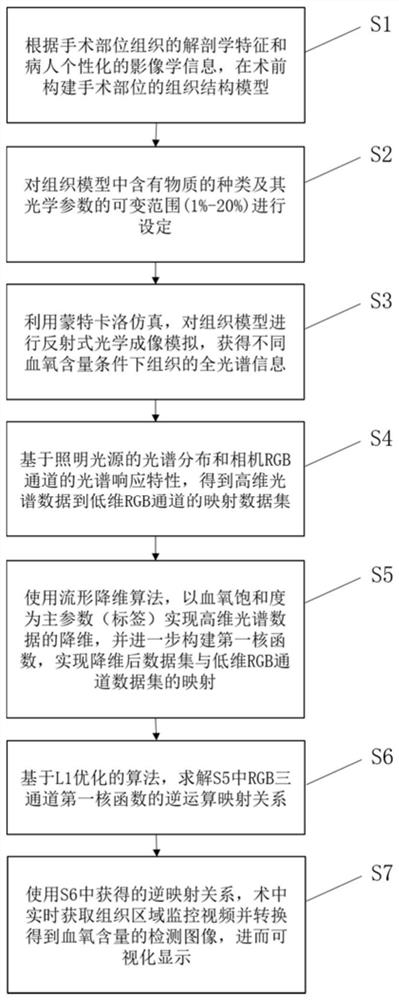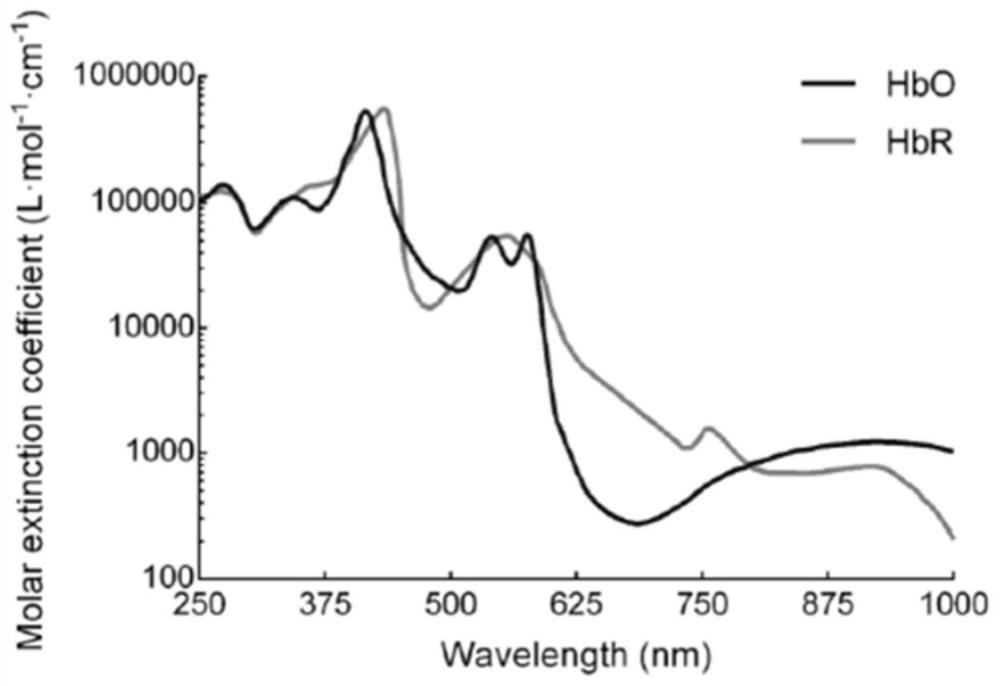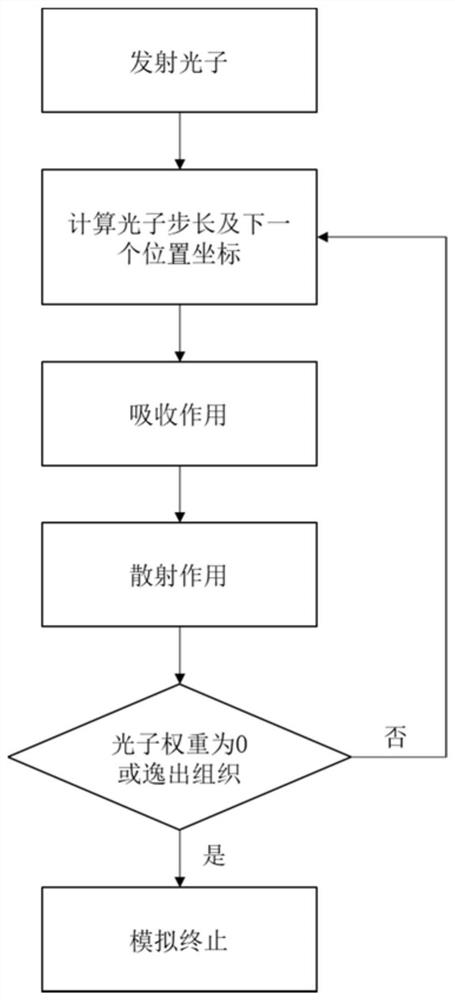Tissue blood oxygen imaging detection method based on two-stage spatial mapping
A space mapping and imaging detection technology, applied in image enhancement, image analysis, image data processing, etc., can solve the problem of universality and accuracy that cannot meet the requirements of clinical applications, reduce the real-time accuracy of detection results, and limit application scenarios, etc. problems, to achieve the effect of simplifying the process of tissue blood oxygen parameters, improving the accuracy of estimation, and ensuring the speed of calculation
- Summary
- Abstract
- Description
- Claims
- Application Information
AI Technical Summary
Problems solved by technology
Method used
Image
Examples
Embodiment
[0055] Such as figure 1 As shown, a tissue oxygen imaging detection method based on two-stage spatial mapping includes the following steps:
[0056] S1. Construct a tissue model according to the anatomical characteristics of the tissue and individual imaging data, and determine the tissue structure parameters. If there is no individual imaging data, the variable range of the tissue structure parameters needs to be set;
[0057] S2. Determine the types of substances contained in the tissue, and set the variable range of optical parameters of each type of substance, wherein the optical parameters include absorption coefficient, scattering coefficient, refractive index and anisotropy parameters;
[0058] S3. Through Monte Carlo simulation, reflective optical imaging simulation is performed on the tissue model to obtain tissue structure parameters and optical parameters of various material types corresponding to various combinations within the variable range under different blood ...
PUM
 Login to View More
Login to View More Abstract
Description
Claims
Application Information
 Login to View More
Login to View More - R&D Engineer
- R&D Manager
- IP Professional
- Industry Leading Data Capabilities
- Powerful AI technology
- Patent DNA Extraction
Browse by: Latest US Patents, China's latest patents, Technical Efficacy Thesaurus, Application Domain, Technology Topic, Popular Technical Reports.
© 2024 PatSnap. All rights reserved.Legal|Privacy policy|Modern Slavery Act Transparency Statement|Sitemap|About US| Contact US: help@patsnap.com










